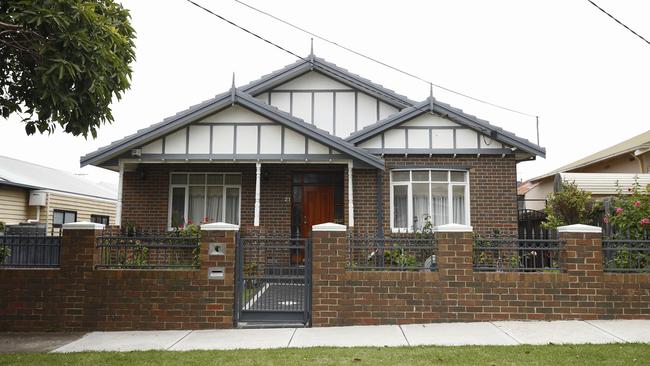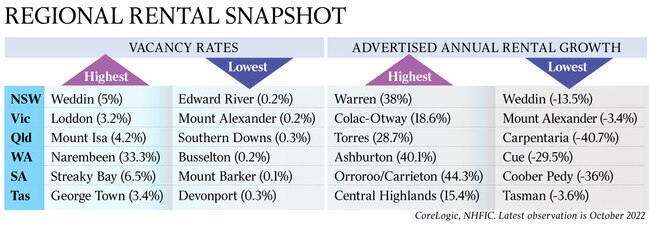Rent rises in the regions slow as Covid exodus begins to reverse
New research shows vacancy rates at exceptionally low levels in most markets as Sydney and Melbourne recover.

The sharp rental price increases in regional Australia have peaked and are slowing, as the great Covid-19 pandemic population shift away from cities to country towns begins to unwind.
Research from the National Housing Finance and Investment Corporation, published on Friday, shows vacancy rates at exceptionally low levels in most markets as Sydney and Melbourne recover following border closures and the return of migrants.
NHFIC head of research Hugh Hartigan said the highly acute rental pressures that built up in regional markets – thanks to Australians escaping the city during the pandemic and regional residents choosing to stay put – were beginning to subside.
“People didn’t want to be in the city during lockdowns and decided to move to the country,” Mr Hartigan said. “You had this extra demand and no valve to release the pressure, which is normally there with people moving from regions to the cities. There’s a general influx each year of people moving from regions to the cities and essentially that was not happening.

“In many regional rental markets now there is a pretty strong unwinding of demand. That’s backed up by other data, which suggests pre-Covid migration patterns might be returning.”
According to the NHFIC, advertised rental growth is slowing in all regional areas. Advertised rents are increasing by at least 10 per cent in Sydney, Melbourne and Adelaide but have peaked in Brisbane, Perth, Hobart, the ACT and Darwin.
“During the pandemic and for much of 2022, in Sydney and Melbourne, the lowest vacancy rates (and strongest rental increases) were typically observed in outer areas, with inner-city areas recording higher vacancy rates (and lower rental pressures),” the NHFIC says.
Of capital cities, Melbourne has the highest vacancy rate at 4.6 per cent and the lowest CPI rent growth at just 1 per cent. Rental growth fell to -4 per cent in the middle of the pandemic. Sydney’s vacancy rate is 2 per cent and Brisbane is under 1 per cent.
Rental growth appears to have peaked in regional NSW, slowing from 12 per cent to about 7 per cent during 2022 but the vacancy rate is at its lowest level in the past 12 years at about 1 per cent .
In Victoria, advertised rent growth has halved from 12 per cent to 6 per cent during the year and vacancy rates are starting to come off record lows.
The decline in rental growth has been slower in regional Queensland, falling slightly from 14 per cent to 12 per cent during 2022 and rents paid when rental agreements are signed have jumped by 21 per cent.
The sharpest fall in demand in advertised rental growth was in Tasmania, falling from a peak of about 16 per cent in late 2021 to 4 per cent this year.
Rent in regional South Australia is just starting to slow. Vacancy rates are close to 1 per cent.
Advertised rent growth has fallen in regional Western Australian from 16 per cent to about 10 per cent in 2022 but the vacancy rate is low at below 2 per cent.
Vacancy rates in the ACT and Darwin are below 1 per cent and about 2 per cent respectively.



